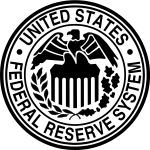Federal funds probability
Federal funds probability is the probability of actions taken by the Federal Reserve System of the United States at upcoming Federal Open Market Committee (FOMC) meetings. At every meeting of the FOMC, its members decide whether to increase, decrease, or leave the Federal funds rate unchanged after reviewing the nation's economic conditions. Financial markets constantly predict the Federal Reserve Systems' moves by trading Federal funds futures contracts on the Chicago Board of Trade (CBOT).
As such, the prices of the CBOT Federal funds contracts reflect expectations of Federal Reserve actions and can be used to calculate the implied probability of action at each FOMC meeting. This phenomenon was perceived by Gerald Lucas and Timothy Quek, fixed-income strategists at Merrill Lynch, who published the article "Front-End Pricing Report Guide" in the Merrill Lynch Global Fixed Income Research report of Nov. 10, 1995. They created a financial model to calculate the probabilities at FOMC meetings and published their Fed funds probability reports for their clients. Ever since, the financial markets have tracked this probability, which is frequently reported by financial media such as CNBC and MarketWatch.
The Federal funds probability report has a significant role in financial markets. Market makers and traders use this information to trade financial assets. Federal Reserve decision-makers use the information to assess market expectations. By using the report, and other indexes, markets can constantly adjust to changes in the economic outlook, reducing the chances of a shock to the financial system.
